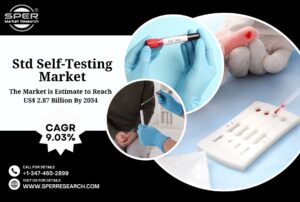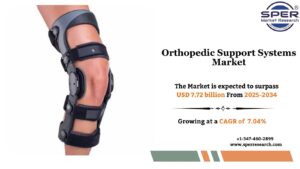Std Self-Testing Market Share, Size and Demand 2034

Sexually transmitted disease (STD) self-testing is a technique that allows people to obtain their own biological samples, like blood, urine, or swabs, and use diagnostic kits to check for STIs outside of clinical settings. HIV, chlamydia, gonorrhea, syphilis, and trichomoniasis are among the infections that these tests are intended to identify. Self-testing kits typically come with all the equipment needed to collect samples, testing materials, and comprehensive instructions to walk users through the process. By enabling users to conduct the test on their own and get results without the direct assistance of medical professionals, the procedure enables prompt infection detection in a controlled and private setting.
According to SPER market research, ‘Global STD Self-testing Market Size By Application, By Sample Type, By Distribution Channel – Regional Outlook, Competitive Strategies and Segment Forecast to 2034’ states that the Global STD Self-testing Market is predicted to reach 2.87 billion by 2034 with a CAGR of 9.03%.
Drivers:
The market for STD self-testing is fueled by a number of factors that raise adoption and demand. People are increasingly looking for convenient and private testing options as they become more conscious of sexual health and the value of early STI detection. The need for easily accessible diagnostic solutions is further fueled by the rising prevalence of STIs worldwide. Consumer confidence and adoption are increased by technological advancements in self-testing kits, such as increased accuracy, quick results, and ease of use. Testing is also made more accessible by expanding availability through telehealth services, pharmacies, and internet platforms. The market is growing as a result of supportive public health campaigns and initiatives that encourage early treatment, preventive care, and routine screening.
Download the Detailed Analysis in PDF format, Here
Restraints:
A number of obstacles may prevent the STD self-testing market from expanding further. Because incorrect sample collection or kit misuse can produce false results that undermine consumer trust, accuracy and reliability issues continue to be a major concern. Health authorities’ approvals and regulatory obstacles can cause delays in product launches and market entry. Adoption may be limited in some areas, particularly in developing nations, by a lack of knowledge or comprehension of self-testing protocols. People may be deterred from using self-testing kits by the social stigma associated with sexually transmitted infections. The requirement for follow-up confirmatory testing and competition from traditional clinical testing are further obstacles. The high cost of advanced kits and supply chain limitations may also hinder market growth.
North America dominates the STD self-testing market, supported by advanced healthcare infrastructure, strong awareness programs, and easy access to testing kits. Europe follows closely, driven by favourable regulations, public health initiatives, and emphasis on early detection. Some of the key market players are Atomo Diagnostics, autotest VIH, bioLytical Laboratories, BioSure, Everlywell, JAL Medical, LetsGetChecked, MedMira, Meril Life Sciences, and My Lab Box
For More Information, refer to below link: –
Std Self-Testing Market Growth
Related Reports:
Dental Simulator Market Growth
Follow Us –
LinkedIn | Instagram | Facebook | Twitter
Contact Us:
Sara Lopes, Business Consultant — USA
SPER Market Research
enquiries@sperresearch.com
+1–347–460–2899





